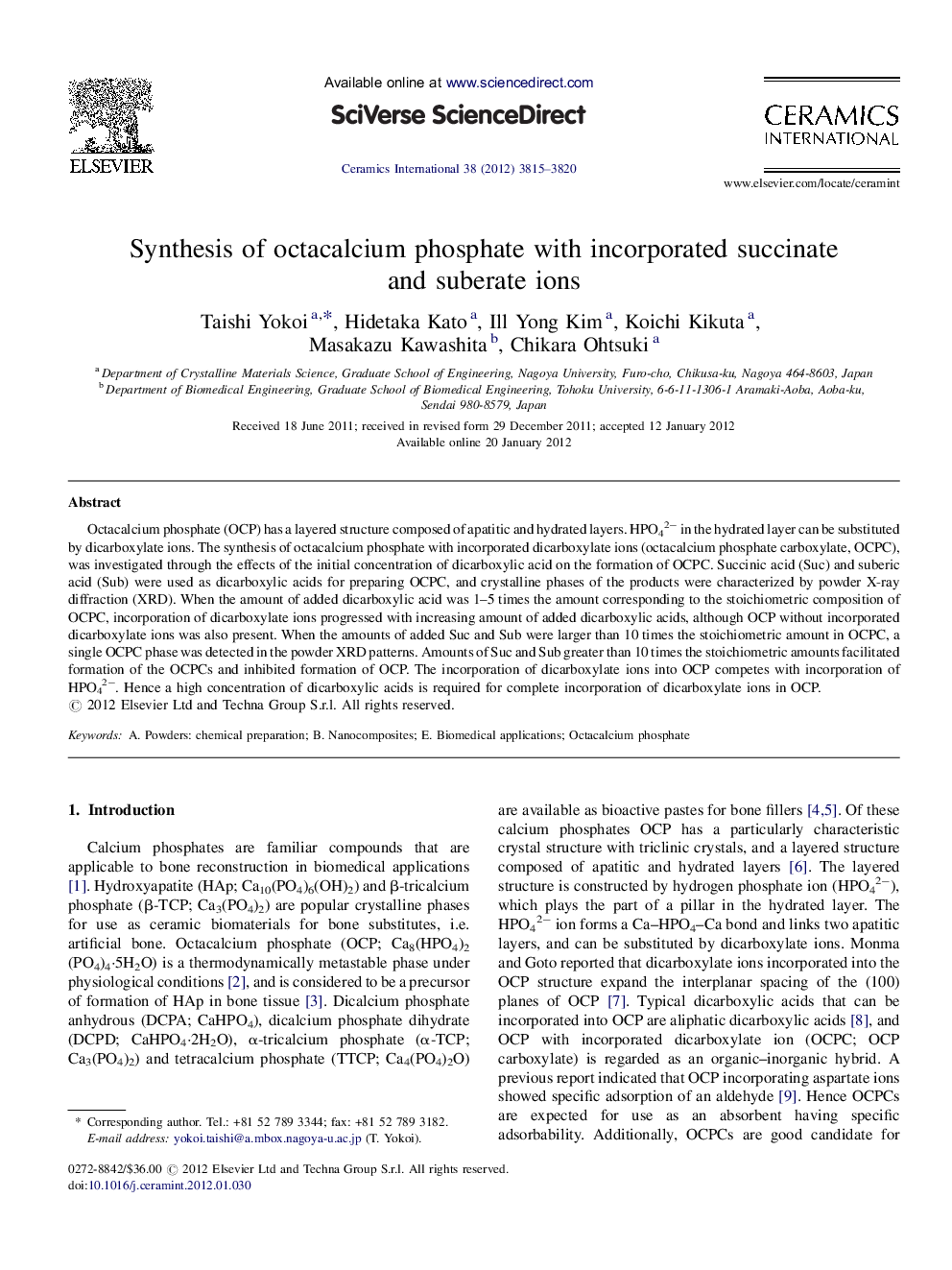| Article ID | Journal | Published Year | Pages | File Type |
|---|---|---|---|---|
| 1462654 | Ceramics International | 2012 | 6 Pages |
Abstract
Octacalcium phosphate (OCP) has a layered structure composed of apatitic and hydrated layers. HPO42â in the hydrated layer can be substituted by dicarboxylate ions. The synthesis of octacalcium phosphate with incorporated dicarboxylate ions (octacalcium phosphate carboxylate, OCPC), was investigated through the effects of the initial concentration of dicarboxylic acid on the formation of OCPC. Succinic acid (Suc) and suberic acid (Sub) were used as dicarboxylic acids for preparing OCPC, and crystalline phases of the products were characterized by powder X-ray diffraction (XRD). When the amount of added dicarboxylic acid was 1-5 times the amount corresponding to the stoichiometric composition of OCPC, incorporation of dicarboxylate ions progressed with increasing amount of added dicarboxylic acids, although OCP without incorporated dicarboxylate ions was also present. When the amounts of added Suc and Sub were larger than 10 times the stoichiometric amount in OCPC, a single OCPC phase was detected in the powder XRD patterns. Amounts of Suc and Sub greater than 10 times the stoichiometric amounts facilitated formation of the OCPCs and inhibited formation of OCP. The incorporation of dicarboxylate ions into OCP competes with incorporation of HPO42â. Hence a high concentration of dicarboxylic acids is required for complete incorporation of dicarboxylate ions in OCP.
Keywords
Related Topics
Physical Sciences and Engineering
Materials Science
Ceramics and Composites
Authors
Taishi Yokoi, Hidetaka Kato, Ill Yong Kim, Koichi Kikuta, Masakazu Kawashita, Chikara Ohtsuki,
